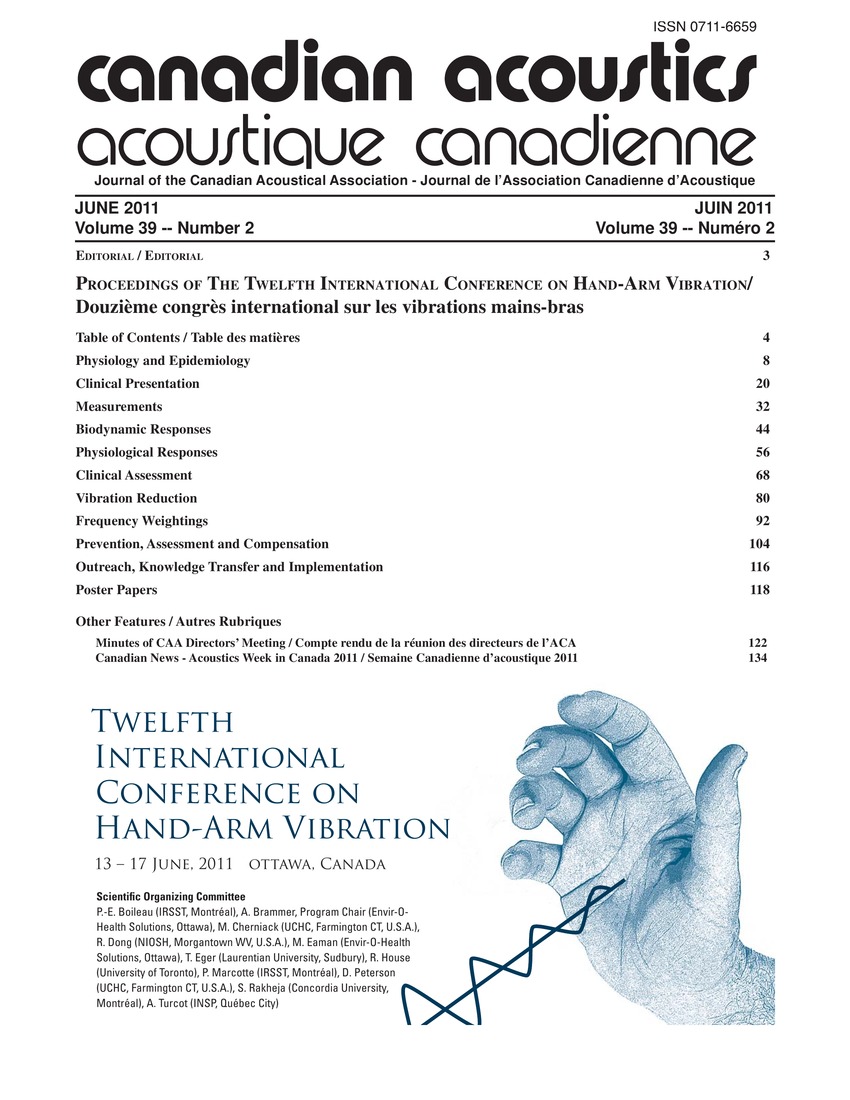Laboratory assessment of vibration emissions from vibrating forks used in simulated beach cleaning
Keywords:
Debris, Manures, Homogenous mixtures, Laboratory assessment, Laboratory studies, Test apparatus, Vibration data, Vibration exposureAbstract
The vibrations associated with the use of vibrating manure forks are characterized and the vibration exposure time limits based on the recommendations of ANSI S2.70-2006 are estimated. To investigate the vibration exposures associated with these operations, a laboratory study was performed on the vibrations produced by the forks operated during simulated beach cleaning. The test apparatus for the laboratory study consisted of a mortar-mixing tub filled with a homogenous mixture of moist sand and debris. Vibration data were collected for eight seconds per trial. ANOVA results indicate that the mean acceleration for the fast fork was significantly higher than that for the slow fork. The slow fork with the mesh basket could be operated at full throttle for almost three hours before reaching the action value.Additional Files
Published
How to Cite
Issue
Section
License
Author Licensing Addendum
This Licensing Addendum ("Addendum") is entered into between the undersigned Author(s) and Canadian Acoustics journal published by the Canadian Acoustical Association (hereinafter referred to as the "Publisher"). The Author(s) and the Publisher agree as follows:
-
Retained Rights: The Author(s) retain(s) the following rights:
- The right to reproduce, distribute, and publicly display the Work on the Author's personal website or the website of the Author's institution.
- The right to use the Work in the Author's teaching activities and presentations.
- The right to include the Work in a compilation for the Author's personal use, not for sale.
-
Grant of License: The Author(s) grant(s) to the Publisher a worldwide exclusive license to publish, reproduce, distribute, and display the Work in Canadian Acoustics and any other formats and media deemed appropriate by the Publisher.
-
Attribution: The Publisher agrees to include proper attribution to the Author(s) in all publications and reproductions of the Work.
-
No Conflict: This Addendum is intended to be in harmony with, and not in conflict with, the terms and conditions of the original agreement entered into between the Author(s) and the Publisher.
-
Copyright Clause: Copyright on articles is held by the Author(s). The corresponding Author has the right to grant on behalf of all Authors and does grant on behalf of all Authors, a worldwide exclusive license to the Publisher and its licensees in perpetuity, in all forms, formats, and media (whether known now or created in the future), including but not limited to the rights to publish, reproduce, distribute, display, store, translate, create adaptations, reprints, include within collections, and create summaries, extracts, and/or abstracts of the Contribution.


